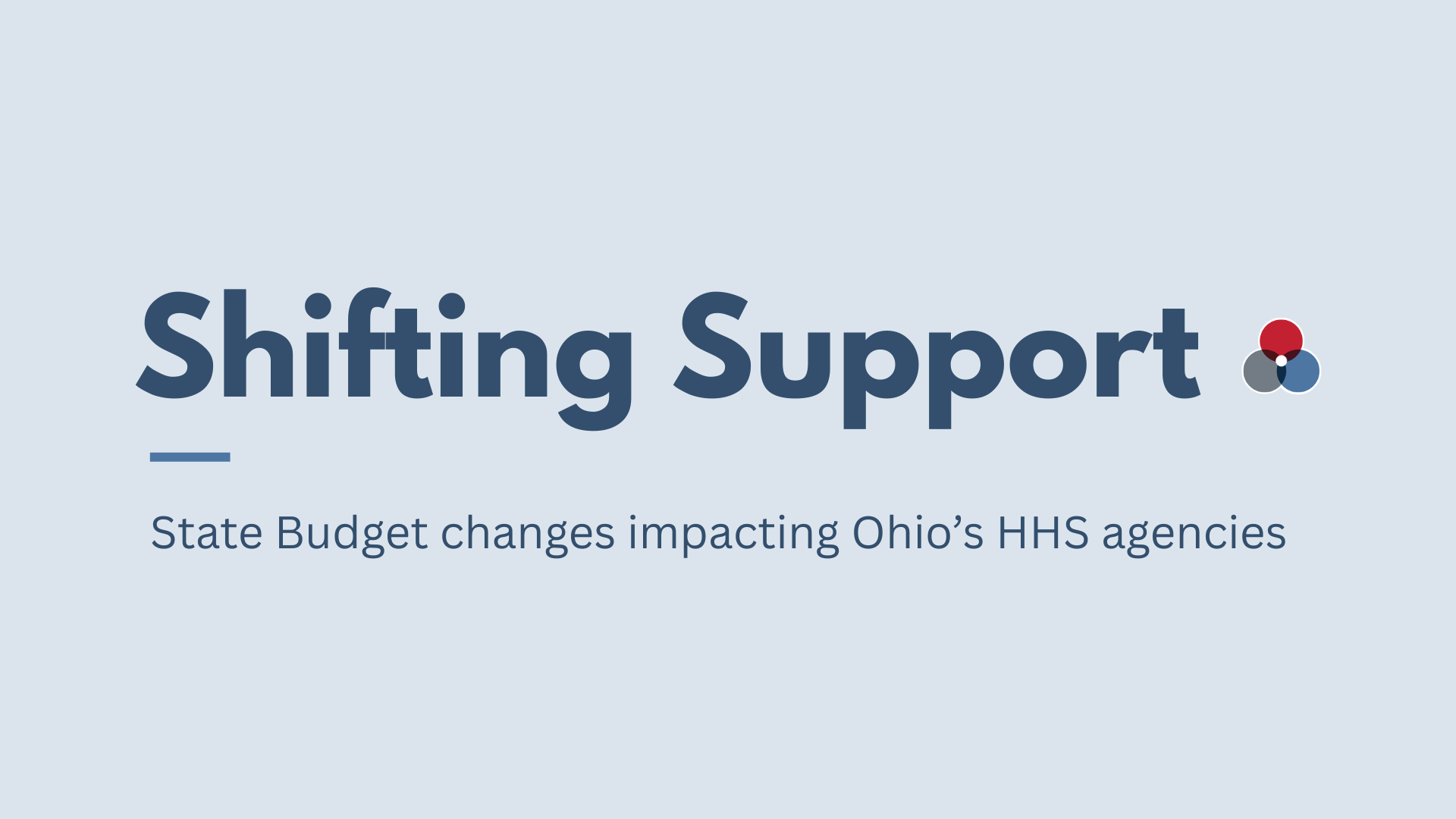Temporary Emergency Hunger Assistance is Buoying Ohio’s Economy and Should Continue to Help Workers Avoid a Benefit Cliff
Community Solutions Team and Emily Campbell, Associate Director and Williamson Family Fellow for Applied Research The federal and state governments have collaborated during the pandemic to provide temporary flexibilities and benefit enhancements to help fight food insecurity during unprecedented times. These flexibilities include, but are not limited to:
- SNAP College Student Eligibility
- Pandemic-EBT Program
- SNAP Online Food Purchasing Pilot
- Suspension of Redeterminations, Interim Reports and Case Closures
- Waiving the physical presence requirements for the Women, Infants, and Children Program
Perhaps the most critical and impactful of them all, however, came through the Families First Coronavirus Response Act (FFCRA) in March 2020. This measure granted states temporary Supplemental Nutrition Assistance Program (SNAP or food stamps) flexibility to allow the issuance of emergency allotments based on a federal public health emergency declaration[1]and a state emergency or disaster declaration.[2] While states must apply for an extension of the waiver every month, all states have exercised this option during the pandemic.
How is SNAP eligibility determined?
SNAP has some of the most stringent eligibility requirements among the federal benefit programs, requiring households to meet three income and resource tests while still being subject to the three-month time limit:
- A household’s gross monthly income, that is, household income before deductions, must be at or below 130 percent of the federal poverty line (FPL) which is recalculated every federal fiscal year.
- A household’s net income, that is income after deductions are applied, must be at or below the poverty line.
- A household’s assets must fall below certain limits: households without a member who is elderly or disabled must have assets below $2,250 or less and households with such a member must have assets of $3,500 or less.
SNAP benefits are only accessible to the poorest households.
Because of these rigorous requirements, SNAP benefits are only accessible to the poorest households. Additionally, individuals between 18 and 50 without children in the household are limited to three months of SNAP benefits out of every three years unless they are working or in a work training program 20 hours a week.
How do the emergency allotments work?
Generally, a household’s monthly SNAP benefit is based on a multitude of factors including household size, monthly income, and expenses like housing, childcare and medical costs.The monthly SNAP allotment is also based on the Thrifty Food Plan which USDA defines as the national standard for a nutritious diet at a minimal cost. This food plan is the lowest of four USDA-designed food plans and is generally not used by government agencies for any purpose other than setting SNAP allotments. The Thrifty Food Plan has been heavily criticized even prior to the pandemic for ignoring special dietary needs, disregarding the high cost of fresh and healthy food, and unrealistically assuming food prices are stable and identical across the country. Under the Thrifty Food Plan, a family of four including two parents and two children should spend no more than $638.85 per month on food compared to the same family on the Liberal Plan who would be expected to spend around $1,261.70 per month.
Under the Thrifty Food Plan, a family of four including two parents and two children should spend no more than $638.85 per month on food.
Due to a sharp increase in the number of families reporting difficulties affording food and other basic needs due to the pandemic, the law allowed states to issue emergency allotments (supplements) to households not currently receiving the maximum benefit for their household size. Beginning in April 2021, the United States Department of Agriculture (USDA) changed the supplementation policy and authorized the payment of a supplement of at least $95 to all households receiving SNAP benefits.
How do the Maximum Benefits Work?
The Consolidated Appropriations Act, passed at the end of 2020, increased all SNAP benefits by 15 percent. The subsequent American Rescue Plan Act, passed in March 2021, extended this increase through September 2021. Because of this, the maximum allotment increased by 15 percent for all household sizes. This caused the emergency allotments to be worth even more than originally reported.
How Have Temporary SNAP Enhancements Impacted Various Families?
Data collected by the U.S. Census Bureau between April 28 and May 10, 2021 showed that at least 670,000 Ohio adults experienced food insufficiency just in the previous seven days, including 375,000 who are in households with children. The Center for Community Solutions collaborated with Ohio Association of Foodbanks to model the amount of additional SNAP benefits various families might receive as a result of emergency allotments and other temporary enhancements. According to our calculations, working families and older adults who care for loved ones are benefitting the most from the SNAP enhancements.Figure 1: Estimated Monthly Benefit for Various Old Adult Households in Ohio, Pre-Pandemic and with Temporary SNAP Enhancements

Pre-pandemic, National Council on Aging estimated that more than half of older Americans who qualify for SNAP were “missing out on benefits.” One reason that older adults often do not participate in SNAP is that the standard minimum monthly benefit of $16 per month is not seen as worth the hassle of having to interview and gather documents frequently to recertify eligibility. While households with older adults do receive less in monthly benefits on average than other families, in reality, most senior SNAP households receive much more than the minimum allotment with an average monthly benefit of $120.[3] Thanks to the temporary federal SNAP enhancements, all households with older adults that receive SNAP are brought up to the maximum allotment for their family sizes. As shown in the graphic above, older adults caring for loved ones benefit more than those who live alone because of the increased household size making their maximum allotments larger. The extra SNAP benefits can be used to purchase more expensive fresh meat, dairy and produce. SNAP benefits can only be used to purchase food and not other basic needs such as personal care, personal hygiene products, diapers or households cleaning products.
Older adults caring for loved ones benefit more than those who live alone because of the increased household size making their maximum allotments larger.
Figure 2: Estimated Monthly Benefit for Various Three Person Families in Ohio, Pre-Pandemic and with Temporary SNAP Enhancements

A key demographic benefiting from temporary SNAP enhancements is working families. Ohio has a particularly high share of SNAP recipients who are employed. In early May, nearly half of adults in Ohio who used SNAP to purchase food in the last month were working, compared to 34 percent nationwide. Ordinarily, earnings reduce the SNAP benefit a family receives, under the assumption that the more you earn, the more money you have to spend on food. Although this is not always the case, employed people usually qualify for less SNAP assistance. By bringing all assistance groups up to the maximum benefit, the flexibilities enacted in 2020 mean that working Ohioans receive just as much in SNAP as Ohioans with no income. SNAP recipients who continued to work full time throughout the pandemic received the greatest amount of emergency allotments. Unlike some other temporary emergency benefits, the way temporary SNAP increases were designed meant that there was no disincentive to work – low-incomeunemployed people who returned to work were able to keep the same level of food assistance for their families – but only for as long as the temporary enhancements remain in place.When the temporary emergency SNAP enhancements end, it will create a significant benefit cliff.The extra SNAP benefits are currently slated to disappear abruptly rather than phasing out. A single parent with two children working full time for $13 per hour in our model currently receives a family’s maximum allotment of $616 per month. When the temporary enhancements expire, that family would suddenly drop to around $100 per month in SNAP benefits. Ohio policymakers should not push workers off this cliff prematurely.
How Have SNAP Emergency Allotments Helped Ohio’s Economy and Families?
In April 2021, temporary SNAP enhancements gave Ohio’s 760,000 SNAP households an estimated $120 million to be spent at food retailers, grocers and farmers markets. Many families also receive help affording groceries via the Pandemic-EBT program. According to a USDA study, every dollar in SNAP benefits spent when the economy is weak and unemployment is elevated increases the gross domestic product (GDP) by $1.54. Every month that temporary SNAP enhancements remain in place, they produce around $185 million in economic activity for Ohio. This is crucial given the fact that the pandemic had a significant negative impact on supply chains and industries across the state. These SNAP funds have returned lost taxpayer dollars back to Ohio which in turn helps to stabilize local economies; free up resources for people to spend on other needs including non-food purchases; and generate income for employees at retail employees as well as workers involved in food production and transportation. If the enhanced benefits continue through the end of 2021, it could mean an additional $1.2 billion in GDP in Ohio.
In April 2021, temporary SNAP enhancements gave Ohio’s 760,000 SNAP households an estimated $120 million to be spent at food retailers, grocers and farmers markets.
Monthly SNAP issuance across the state was up by 60 percent in July 2020 compared to July 2019, growing to $268 million per month. These are 100 percent federally funded dollars flowing to Ohioans in need. Most of the increase was due to the additional SNAP benefits put in place during the pandemic. The number of people applying for SNAP benefits did grow during this time by enough to account for a small percentage of the overall increase in federal food assistance issued to Ohioans. Federal SNAP benefits issued by Noble county more than doubled year over year, issuance nearly doubled in Holmes, Warren, and Wyandot, and they increased by at least 50 percent in every Ohio county except Cuyahoga.[table id=137 /]Additionally, emergency allotments have helped balance the purchasing power of households that receive SNAP as the cost of food continues to rise at extraordinary rates. Overall inflation is at 4.2 percent, the largest 12-month increase in more than 12 years.
When the benefits end, the impact on working families and segments of Ohio’s economy could be profound.
While the 15 percent increase in SNAP benefits is set to expire nationwide in September, how long the much larger emergency allotments remain in place is within states’ control for the remainder of calendar year 2021.[4] When the benefits end, the impact on working families and segments of Ohio’s economy could be profound.[1] The Biden Administration announced the federal public health emergency will likely remain in place for the rest of 2021.[2] While some states have begun ending or taking steps to end their state COVID-19 related emergency declarations, USDA has worked with states and state agencies to ensure states remain eligible to issue emergency allotments[3] “Characteristics of Supplemental Nutrition Assistance Program Households: Fiscal Year 2019” United States Department of Agriculture, March 2021.[4]https://www.mcdermottplus.com/wp-content/uploads/2021/01/Public-Health-Emergency-Message-to-Governors.pdf








